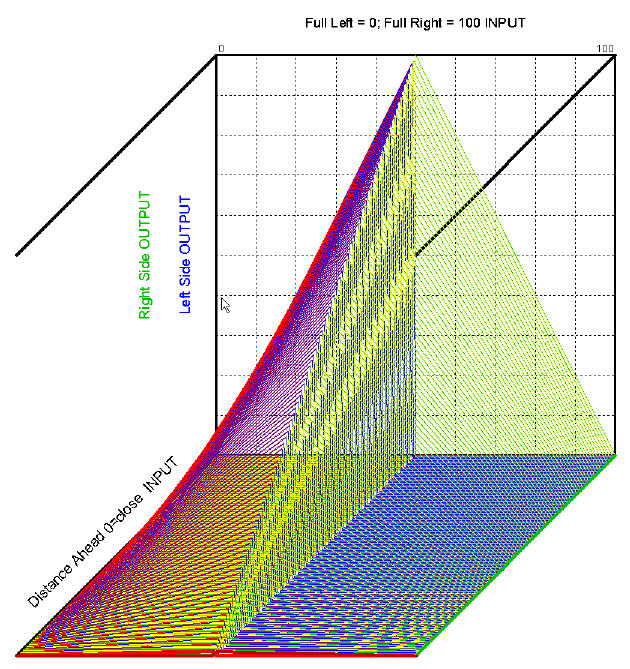
When one drives a vehicle the driver is constantly making decisions about how fast to drive when navigating. For automobiles the road gives the general direction. Pedestrians and other vehicles are obstacles to be avoided. No "formulas" are available to exactly define how the vehicle should be navigated. Humans, however, have learned how to control these vehicles. They are contstantly monitoring the situation and adapting to conditions, while still proceeding to some location goal.
In these demos showing UAVs navigating airspace, the only obstacles are other UAVs. When they are encountered, the KEEL engines of each UAV decide how to avoid a collision. Each "balances" the distance from the obstacle and how the obstacle is positioned relative to its own position and heading.
The navigation model is "very" simple and is not suggested as a complete solution suitable for commercial aircraft. These demos are also only two dimensional. More complete solutions would take into account three dimensional air space, changes in speed, performance of the aircraft, etc.

The demonstrations are executing independent KEEL engines for each of the UAVs.
|
Copyright , Compsim LLC, All rights reserved |